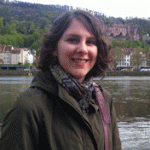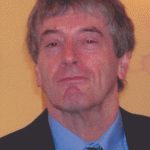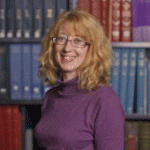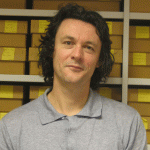(Re)Presenting the Archive – Question 2
By
Sophie Baldock, Matthew Cheeseman, A. S. G. Edwards, James Mussell, Clare Scott, Ian Trowell
March 2014
2To what extent do previous representations (such as editions) of the archives with which you work – or the lack thereof – affect new representations of them?
Wendy Cope’s archive was only recently acquired by the British Library in 2011; therefore, perhaps unsurprisingly, there are no existing editions of Cope’s letters or emails. Now that a large proportion of contemporary writers’ correspondence is likely to be conducted and archived digitally, this raises questions about what form future editions of writers’ correspondence might or should take.
Read this ResponseOne of the difficulties of working with social cataloging is the lack of access to original source material. Because these are largely mass products (especially easily digitized ones such as audio recordings, films, and books) there is a tendency to ignore this problem. A record, for example, can be easily digitized and its physical properties competently cataloged by amateurs because they are so uniform; a vinyl single, for example, requires audio digitization, simple scanning of the labels and sleeves, and notation of the matrix numbers. However, there are plenty of instances when users fail to catalog such items satisfactorily, perhaps due to poor language skills, lack of interest in accuracy, or human error.
Read this ResponseAny “new representations,” if these constitute “new editions,” will potentially differ from “previous representations,” since any new edition ought to present some new hypothesis, whether about the transmission and relative authority of the surviving materials, the status of particular readings, or the nature of the intended audience.
Read this ResponseI don’t think it is possible to have a pure, unmediated encounter with an object from the archive. Previous representations of archival objects, whether complete editions or any other ways in which archival objects are written about and discussed, become part of the discourse that grants the archival object its “original” form. Returning to the archive is often considered returning to the source, the authentic material against which representations should be judged. However, in practice, when we go back to the archive we find that what should have been fixed and stable has changed, rewritten by what has come afterwards. The stability of archival objects comes from subsequent representations, not despite them.
Read this ResponseThe National Fairground Archive (NFA) is a unique collection of material covering all aspects of the culture and history of traveling fairs and entertainment from the 1800s to the present day. Collections include printed works, manuscript material, and audio-visual material, but chiefly photographic material. Many donations have come from fairground enthusiasts and form collections of photographs with associated notebooks. There is also a large collection of ephemeral printed advertising material such as posters and handbills.
Read this Response




